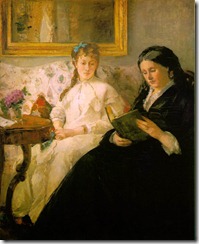by Diane Holmes, Marketing-Zone: Marketing Yourself and Your Book, founder of Pitch University.
I recently asked Literary Agent and advanced writing instructor Donald Mass what he thought about Author Brands, specifically for novels, which can be tricky.

You probably know Donald Maass from his advanced craft and career books on writing, or his new Story Masters Workshop, November 3 – 6, 2011.
He’s developed and guided many writing careers, and he’s seen author branding up close and personal.
Here’s what he said:
“For fiction writers, “brand” is something that emerges as a body of work accumulates. There are hundreds—thousands—of examples of such authors on bookstore shelves. Many are mini brands, though.
Just having a “brand” (identity) as an author doesn’t mean your audience is large. Only powerful stories will win you that.”
— Donald Maass, Founder Donald Maass Literary Agency
He makes two very important points that I want to share with you.
1. It’s Alive!
Your brand’s “shape” can change and will grow to include everything you write, your” body of work.” It emerges. You create the brand of YOU AS AN AUTHOR, because you’re writing books, and because the books create an interaction with readers and with YOU.
It creates meaning.
Your brand will be “done” only when you stop writing and your books stop being read.
Until that time, you have complete control over it, and your participation in your career, the decisions you make, the skills you achieve…. This is you authoring your very own brand.
And more importantly, the you designing the meaning of you upon other (aka The World).
2. Voltage
2. Your writing (and thus your Brand) will require your audience to identify something powerful about you and it. This power will be what makes your books, your name, and your brand “powerful” to your readers.
Average won’t do it. Nice won’t do it.
You need the thunder of POWER, the force of SKILL, and the captivation of a an unexpected WOW.
Badass Creativity
Justine Musk over at Tribal Writer just wrote a post that powerfully combines these two thoughts into one call to badass action:
From Badass Creativity….
Creativity is your birthright.
Yet in a society that bombards us with constant stimuli and never-ending distraction, where the value of productivity ranks right up there with hope and faith and love, it has never been more necessary to carve out the elements needed to generate creative thinking. A creativity-committed lifestyle rarely happens randomly; you design it, through understanding the strategies that enable creativity and building them into your life.
And somewhere along the way, a badass creative makes the connection between what she makes and who she is.
She makes meaning from the raw materials of her life….that can provide value not just for herself, but others.
Carve out the elements. Build them. Design it. Make meaning.
This is the work of building your brand over the life of your career.
And as you carve out your books, build worlds inside your reader’s head, and design a body of work over time, know this: the world needs authors to be more than a whimper.
It needs you to stand up and be powerful, and write books mean something.
Get your badass, creative self on.
Your author brand will follow.
—
by Diane Holmes, Marketing-Zone: Marketing Yourself and Your Book
This is the 8th in a series on Author Branding.
Previous articles include:
1. Author Branding vs. an Army of Writers
2. The Author’s Branding Manifesto
3. The Gleam in Your Author Brand (Brand Building Technique #1)
4. Storytelling Your Author Brand (Brand Building Technique #2)
5. Yes, Your Book Is Part of Your Brand (part 1) (Brand Building Technique #3)
6. Yes, Your Book Is Part of Your Brand (part 2) (Brand Building Technique #4)
7. Your Author Brand: What Do You Want People To Say Behind Your Back? (Brand Building Technique #5)
8.Author Branding: “The Brand Your Brand Could Smell Like.”
—-  Diane writes two columns for Freelance-Zone: Fiction-Zone: Leaps in Fiction Mastery and Marketing-Zone:Marketing-Zone: Marketing Yourself and Your Book.
Diane writes two columns for Freelance-Zone: Fiction-Zone: Leaps in Fiction Mastery and Marketing-Zone:Marketing-Zone: Marketing Yourself and Your Book.
She’s the Founder and Chief Alchemist of Pitch University – “Learn to pitch your book from the AGENTS and EDITORS who make their living at it. Learn. Pitch. Sell.”





 Isaiah Mustafa
Isaiah Mustafa

